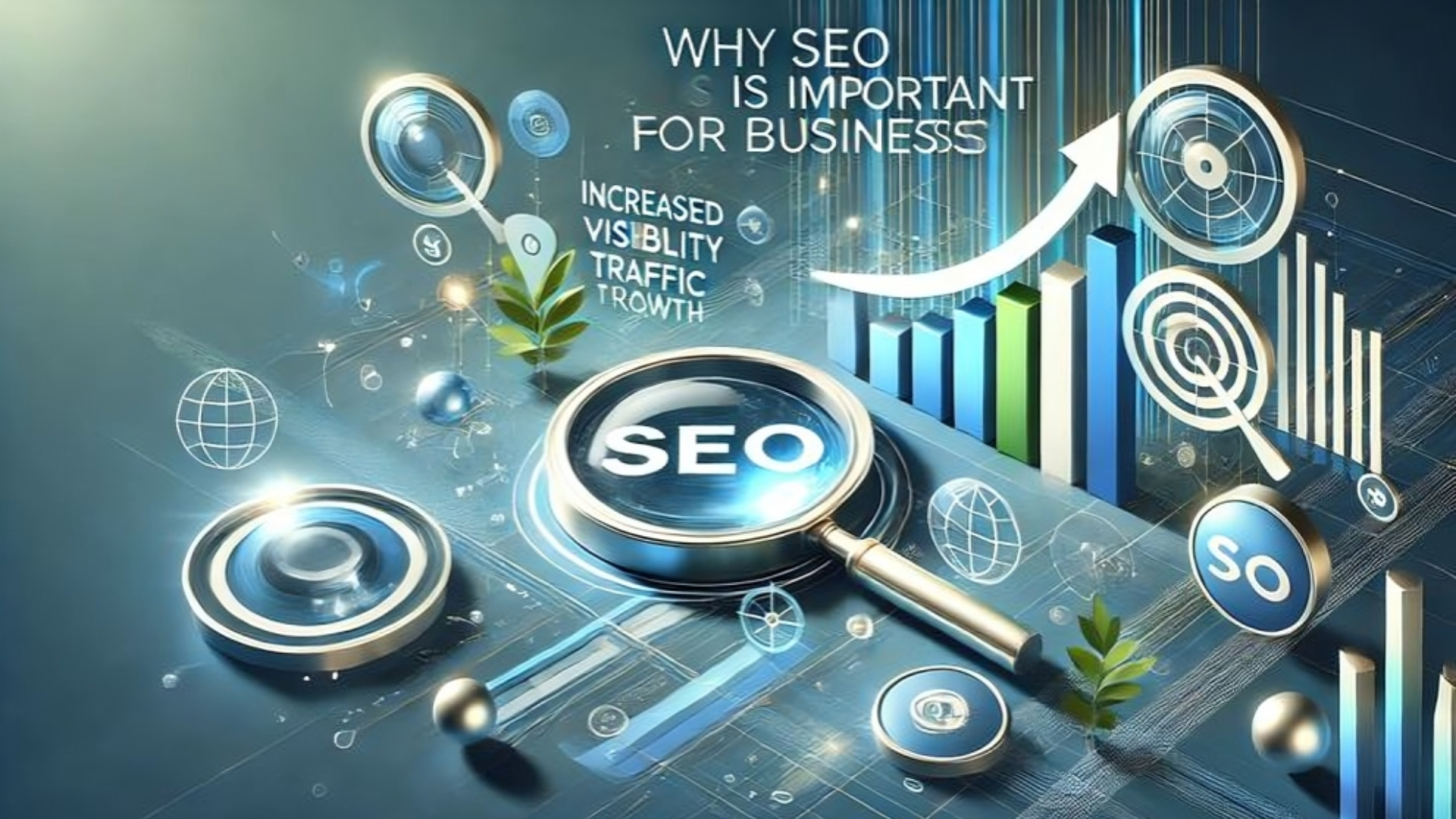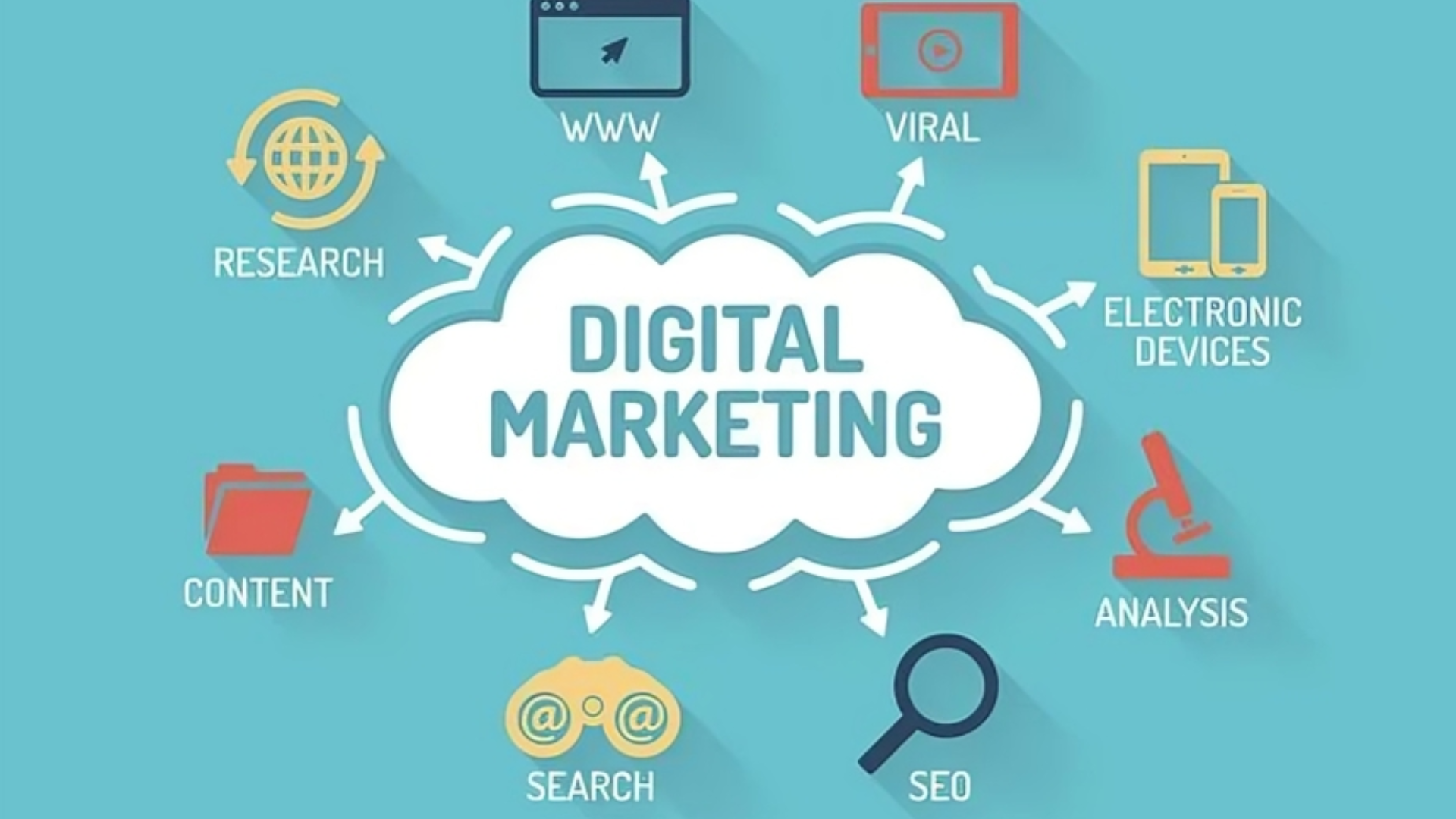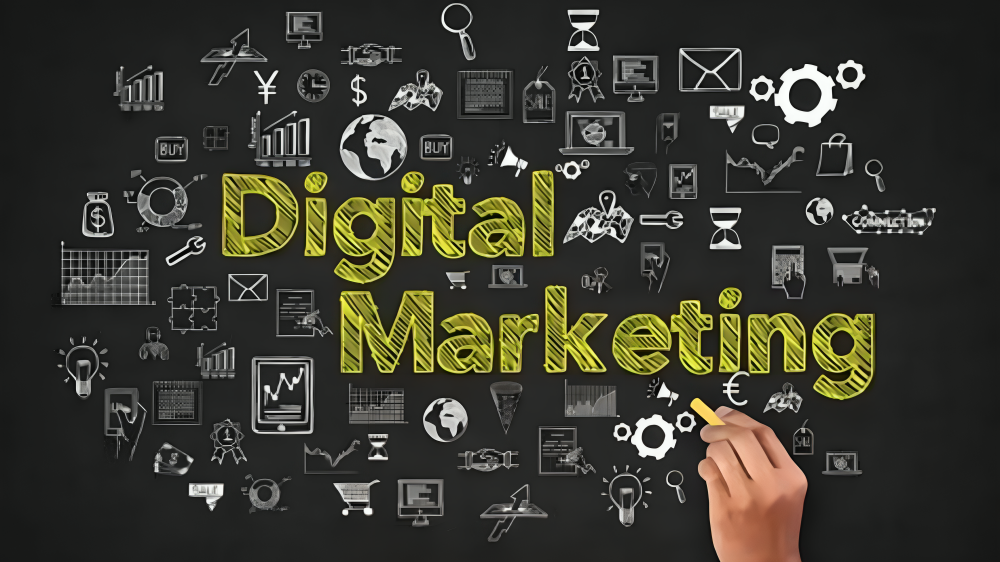Online marketing has become the backbone of business success in today’s digital age. With more consumers turning to the internet to discover, engage, and purchase from brands, mastering online marketing is crucial for businesses looking to thrive. This blog will explore essential strategies to help you maximize your online marketing efforts and drive results in a competitive digital landscape.
1. Know Your Target Audience

The foundation of any effective online marketing strategy starts with understanding your audience. To create personalized and relevant content, you need to know who your audience is, what they need, and how they behave online. Use tools like Google Analytics, surveys, and social media insights to gather valuable data on demographics, interests, and pain points. By tailoring your messaging and content to meet these needs, you’ll create more meaningful connections with your audience and foster long-term engagement.
Know Your Target Audience: The Key to Effective Online Marketing
Understanding your target audience is essential in the world of online marketing. It’s the foundation that supports every campaign, ad, and content piece. Knowing precisely who you’re talking to not only improves engagement but also helps maximize your marketing ROI. In this article, we’ll discuss why identifying and understanding your target audience is critical and how to harness this knowledge for successful online marketing.
Why Knowing Your Target Audience is Essential
Without a clear picture of your target audience, your marketing efforts are like shooting arrows in the dark. Here’s why understanding your audience is crucial:
1.Enhanced Personalization: Personalized content is more likely to resonate. Knowing your audience’s preferences lets you tailor messages that feel personally relevant and engaging.
2.Improved ROI: When your campaigns are directed toward the right audience, you avoid wasting money on ads and content that don’t connect with potential customers.
3.Better Resource Allocation: Understanding who your audience is allows you to allocate time, energy, and resources toward platforms, campaigns, and tactics that work.
Steps to Identify Your Target Audience
1. Define Your Product or Service’s Purpose
To identify your target audience, first understand the core value of what you’re offering. What problem does your product solve? What makes it unique? Knowing this helps you narrow down the type of people who will find your product or service useful.
2. Conduct Market Research
Effective market research can provide valuable insights into your audience’s demographics, behaviors, and preferences. Here are some methods to consider:
Surveys: Use surveys to get feedback from current customers or potential users about what they want and need.
Competitor Analysis: Study the audience that engages with your competitors to understand what they’re doing well and where there might be gaps.
Social Media Listening: Monitor conversations around your brand and competitors on social platforms to identify common needs and preferences.
3. Create Buyer Personas
In online marketing, a buyer persona is a detailed, fictional profile of your ideal customer, crafted using real data and research. This profile helps you understand your audience’s needs, preferences, and behaviors, allowing for targeted and effective marketing strategies include key information like age, gender, location, career, and interests. These personas help you segment your audience, ensuring that each piece of content or ad appeals to a particular group.
4. Use Analytics and Tracking Tools
Your website and social media analytics tools (like Google Analytics, Facebook Insights, and Instagram Analytics) are invaluable for learning about your audience. These tools offer insights into where your audience is coming from, their browsing behaviors, and what content they engage with most.
5. Segment Your Audience
Segmenting your audience allows you to create targeted content that speaks to specific groups. For example, if your product appeals to different age ranges or locations, tailor your messaging accordingly. Segmentation helps you cater to distinct needs within a broad audience.
Crafting Online Marketing Strategies Based on Your Audience
Once you know your target audience, you can tailor your online marketing strategy to engage them effectively. Here’s how:
1. Choose the Right Platforms
Different demographics prefer different platforms. While Gen Z might be more active on TikTok and Instagram, Millennials might be drawn to Facebook or LinkedIn. Knowing where your audience is most active allows you to prioritize your efforts.
2. Tailor Content for Each Platform
Content should be unique to the platform it’s posted on. Short videos work well on TikTok and Instagram, while detailed articles may perform better on LinkedIn. If you’re targeting a young audience, prioritize short-form, entertaining content, while professional audiences may appreciate informative articles or webinars.
3. Personalize Your Messaging
Personalized messaging can improve engagement by making your audience feel valued. This could be as simple as using your audience’s names in emails or as complex as creating customized offers based on past behaviors.
4. Test and Optimize Campaigns
A/B testing lets you experiment with different versions of ads or content to see what resonates best with your audience. Use analytics to measure success and continually refine your approach.
Common Mistakes to Avoid
While identifying your target audience is essential, there are common pitfalls to be aware of:
Being Too Broad: Avoid trying to appeal to everyone; you’ll dilute your message and reduce impact.
Ignoring Data: Trust the insights from your analytics rather than assumptions about what your audience might want.
Failing to Re-evaluate: Audience preferences change over time. Regularly revisit and refine your target audience profile.
2. Create High-Quality Content

Content is the driving force behind every successful online marketing campaign. Whether it’s blog posts, videos, social media updates, or email newsletters, creating valuable, informative, and engaging content is key to attracting and retaining your audience. Focus on providing solutions to your audience’s challenges or answering common questions in your industry. Incorporating SEO strategies, such as keyword research and optimization, will help your content rank higher in search engine results, increasing organic traffic to your website.
Create High-Quality Content: The Backbone of Successful Online Marketing
In the dynamic world of online marketing, creating high-quality content is not just about writing well; it’s about crafting content that resonates with your audience and meets their needs. Quality content is the key to building trust, enhancing brand authority, and driving conversions. In this blog, we’ll explore the importance of high-quality content in online marketing and provide actionable steps to create content that stands out.
Why High-Quality Content Matters in Online Marketing
Content is often the first touchpoint between your brand and potential customers, making it essential to create high-quality, engaging material. Here’s why quality content is crucial in online marketing:
1.Builds Trust and Credibility: High-quality content demonstrates your expertise and reliability. When people find useful and accurate information, they’re more likely to trust your brand and view it as an authority in the industry.
2.Enhances SEO and Visibility: Search engines prioritize content that is informative, relevant, and valuable to users. High-quality content optimized for SEO can improve your site’s search rankings, making it easier for your audience to discover you.
3.Drives Engagement: Engaging content prompts users to interact with your brand through likes, shares, comments, and clicks, all of which increase your reach and visibility.
4.Increases Conversions: Content that resonates with your audience and addresses their pain points can effectively guide them toward a purchase decision, increasing conversions and generating leads.
What Makes Content High-Quality?
Crafting high-quality content goes beyond grammar and spelling. It requires a focus on relevance, originality, accuracy, and value.In online marketing, here are the essential elements of high-quality content:
1. Audience-Centric Approach
High-quality content should speak directly to your target audience. Understanding your audience’s interests, needs, and pain points is the first step to creating content that resonates. When content is crafted with the audience in mind, it’s more likely to drive engagement and loyalty.
2. Originality and Fresh Insights
With the vast amount of content available online, originality is key to standing out. Repeating the same information found elsewhere can make your content feel redundant, so aim to add unique perspectives or dive deeper into topics to offer readers something new.
3. Thorough Research and Accuracy
Quality content is accurate and well-researched. Factual errors or misleading information can harm your brand’s credibility, so always fact-check and use reliable sources to back up your claims. This level of accuracy demonstrates professionalism and builds trust with your audience.
4. Clear Structure and Readability
Effective content is easy to read and visually appealing. Use subheadings, bullet points, and short paragraphs to break up information and guide readers through the piece. Clear structure not only improves readability but also keeps readers engaged.
5. SEO Optimization Without Compromising Quality
Incorporate SEO best practices, such as keyword integration, meta descriptions, and internal links, to improve visibility. However, avoid keyword stuffing or forced phrasing, as it can make content feel unnatural and disrupt the flow.
Steps to Create High-Quality Content for Online Marketing
Creating quality content is a step-by-step process that involves planning, research, and refinement. Here’s how to make sure your content meets high standards:
1. Define Your Content Goals and Audience
Understanding the purpose of your content and your target audience’s needs is essential. Are you aiming to inform, entertain, or convert? Clear goals help you shape the message, tone, and structure of your content, making it more effective and relevant.
2. Research Topics Thoroughly
Research ensures your content is accurate and offers fresh insights. Use tools like Google Trends, Answer the Public, and social media platforms to find topics that are relevant to your audience. Well-researched content provides valuable information and enhances your brand’s authority.
3. Create an Outline for Structure
An outline is crucial for maintaining focus and structure. Start with an engaging introduction, followed by organized sections, and conclude with a call-to-action that encourages further interaction. Structuring content helps keep readers engaged and improves readability.
4. Write with Your Brand Voice and Tone
Your brand voice reflects your personality and values. Whether it’s professional, friendly, or humorous, keeping a consistent voice throughout your content helps build a recognizable brand identity that audiences can connect with.
5. Edit and Optimize for Clarity and SEO
Editing transforms good content into great content. Check for clarity, grammar, and flow, and make sure SEO elements are in place, such as keywords, meta descriptions, and internal links. Use tools like Grammarly or Hemingway to polish your writing and ensure readability.
6. Incorporate Visuals and Interactive Elements
Adding visuals like images, infographics, or videos can make content more engaging and break up large blocks of text. Interactive elements like quizzes, polls, or downloadable guides can also increase engagement, making content more memorable.
Measuring the Success of Your Content
Once you’ve published your content, measure its performance to gauge success and identify areas for improvement. Key metrics to track include:
Engagement Rate: Likes, shares, comments, and clicks reflect how well your audience is responding.
Conversion Rate: Track conversions such as sign-ups, purchases, or downloads to see how effectively your content is driving action.
Time on Page: This metric shows how long users are staying on the page, indicating their interest and engagement.
Bounce Rate: A low bounce rate means users are sticking around, suggesting that your content is relevant and engaging.
Analyzing these metrics allows you to refine your content strategy and continually improve.
Tips for Consistently Creating High-Quality Content
1.Create a Content Calendar: Planning content in advance helps maintain consistency and relevance.
2.Focus on Evergreen Content: Evergreen content remains valuable over time, providing ongoing engagement and SEO benefits.
3.Listen to Feedback: Audience feedback provides insights into what they value, helping you tailor future content to their preferences.
4.Stay Informed on Trends: Content that reflects industry trends and current topics keeps your brand relevant and timely.
3. Optimize Your Website for Search Engines

Search engine optimization (SEO) is an integral part of online marketing. If your audience can’t find you on Google or other search engines, your online visibility will suffer. Optimize your website by using relevant keywords, improving site speed, creating a mobile-friendly experience, and building high-quality backlinks. An effective SEO strategy will help your website rank higher, drive more organic traffic, and increase your chances of converting visitors into customers.
4. Leverage Social Media for Engagement

Social media is a powerful tool for online marketing that allows you to connect directly with your audience. Each platform offers unique ways to engage, whether through images on Instagram, tweets on X (formerly Twitter), or professional connections on LinkedIn. To master online marketing, focus on creating platform-specific content that resonates with your target audience. Incorporate interactive features such as polls, contests, and live videos to increase engagement. Paid social media advertising can further enhance your reach, targeting specific demographics to boost visibility.
Harness Social Media for Engagement: Key Strategies for Effective Online Marketing
In today’s online marketing landscape, social media has emerged as a crucial tool for businesses aiming to connect with their audiences. With billions of users actively engaging on platforms like Facebook, Instagram, Twitter, and LinkedIn, social media presents a unique opportunity for brands to establish connections, nurture relationships, and cultivate customer loyalty. However, simply maintaining a social media presence isn’t sufficient; businesses must strategically harness these platforms to optimize engagement. In this blog, we’ll delve into the importance of social media engagement in online marketing and outline effective strategies to enhance your brand’s online presence.
Why Social Media Engagement is Crucial
1.Extensive Reach: Social media platforms enable businesses to reach wide-ranging audiences quickly and efficiently. A single post can resonate with users from various demographics and locations, significantly boosting brand visibility. This broad reach is vital for attracting new customers while retaining existing ones.
2.Real-Time Interaction: One of the standout features of social media is its capacity for real-time communication. Customers can interact with brands by asking questions, offering feedback, and sharing their experiences. This immediacy improves customer satisfaction and fosters trust, as consumers feel acknowledged when their voices are heard.
3.Cost-Effective Marketing: Compared to traditional marketing approaches, social media marketing often proves to be more economical. Many platforms provide free tools for content promotion, and paid advertising options can be finely targeted to specific audiences. This cost-effectiveness makes social media an appealing choice for businesses of all sizes, enabling them to maximize their marketing investments.
4.Community Building: Engaging with customers through social media cultivates a sense of community. When brands actively respond to comments, recognize feedback, and join conversations, they build loyalty and advocacy. A strong community can lead to repeat purchases and positive word-of-mouth, enhancing overall brand influence.
Strategies to Boost Social Media Engagement
To effectively utilize social media for engagement within your online marketing strategy, consider implementing these key tactics:
1. Understand Your Audience
Grasping your target audience is essential for successful engagement. Utilize the analytics tools available on social media platforms to gather insights into your followers, including their demographics, interests, and online behaviors. This valuable data will inform your content creation and engagement strategies, ensuring they resonate with your audience.
2. Produce Compelling Content
Creating high-quality and engaging content is vital for capturing your audience’s attention. Aim to develop content that is not only informative but also entertaining. Experiment with various formats, such as videos, infographics, and live streams, to keep your audience engaged. The more valuable your content, the higher the likelihood it will be shared, significantly expanding your reach.
3. Promote Two-Way Communication
Encourage two-way communication by posing open-ended questions, creating polls, and inviting followers to share their thoughts and experiences. Actively responding to comments and messages shows that you value your audience’s input. This engagement nurtures a sense of community and encourages followers to interact with your brand more frequently.
4. Leverage User-Generated Content
Harnessing user-generated content (UGC) can greatly enhance engagement. UGC includes any content created by customers that showcases your brand, such as reviews or photos featuring your products. Sharing UGC not only builds community but also serves as genuine testimonials that can sway potential customers.
5. Monitor and Adapt
Continuously monitor your social media performance by utilizing analytics tools to track engagement metrics such as likes, shares, and comments. Understanding which content resonates with your audience allows for ongoing refinement of your strategy. Be open to adjusting your approach based on audience feedback and engagement levels.
5. Utilize Email Marketing for Personalization

Email marketing remains one of the most effective online marketing strategies for building customer relationships. It offers a direct channel of communication with your audience, allowing for highly personalized content. Segment your email list based on behaviors, interests, or purchase history to send tailored messages. Whether you’re launching a new product, offering promotions, or sharing blog updates, well-crafted email campaigns can lead to higher engagement and conversion rates.
6. Invest in Paid Advertising

To enhance your organic efforts, investing in paid advertising is a smart move. Platforms like Google Ads and Facebook Ads provide advanced targeting features, allowing you to reach potential customers based on interests, demographics, and online behaviors. Paid ads help you drive traffic quickly and offer detailed metrics to assess your campaign’s performance. By reviewing these insights, you can consistently refine your ad strategy to maximize return on investment (ROI).
7. Monitor and Analyze Performance
 One of the key advantages of online marketing is the ability to track and measure performance in real time. Use analytics tools such as Google Analytics, social media insights, and email marketing software to monitor how your campaigns are performing. Pay attention to key metrics like website traffic, conversion rates, click-through rates, and engagement levels. Regularly reviewing these metrics will help you identify what’s working and what needs improvement, allowing you to make data-driven decisions that enhance your marketing efforts.
One of the key advantages of online marketing is the ability to track and measure performance in real time. Use analytics tools such as Google Analytics, social media insights, and email marketing software to monitor how your campaigns are performing. Pay attention to key metrics like website traffic, conversion rates, click-through rates, and engagement levels. Regularly reviewing these metrics will help you identify what’s working and what needs improvement, allowing you to make data-driven decisions that enhance your marketing efforts.
8. Stay Updated with Online Marketing Trends

The world of online marketing is always evolving, with new trends and technologies emerging regularly. To remain competitive, it’s essential to stay updated on the latest industry developments. Follow industry blogs, attend webinars, and network with fellow marketers to stay informed. Whether it’s adopting AI-driven tools, utilizing new social media features, or exploring influencer marketing, staying ahead of trends will ensure your strategies remain fresh and effective.
Conclusion
Online marketing is a dynamic and ever-changing field that offers incredible opportunities for growth when done right. By understanding your audience, creating high-quality content, optimizing for search engines, and leveraging social media and email marketing, you can build a solid foundation for success. Combine these efforts with data-driven insights and a willingness to adapt, and you’ll master online marketing in today’s competitive digital landscape.
For more queries, visit site
